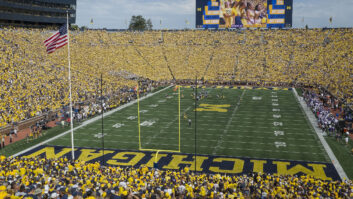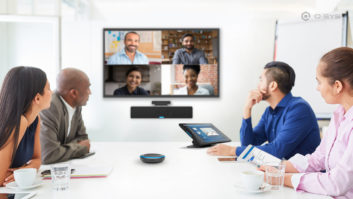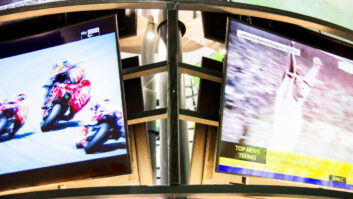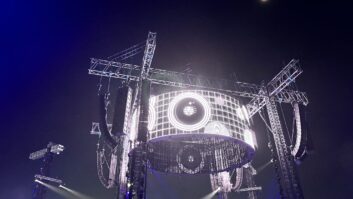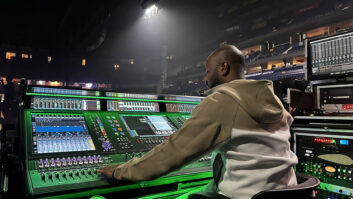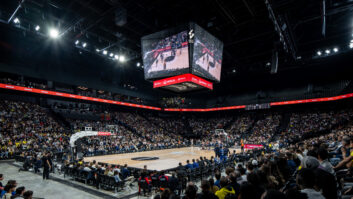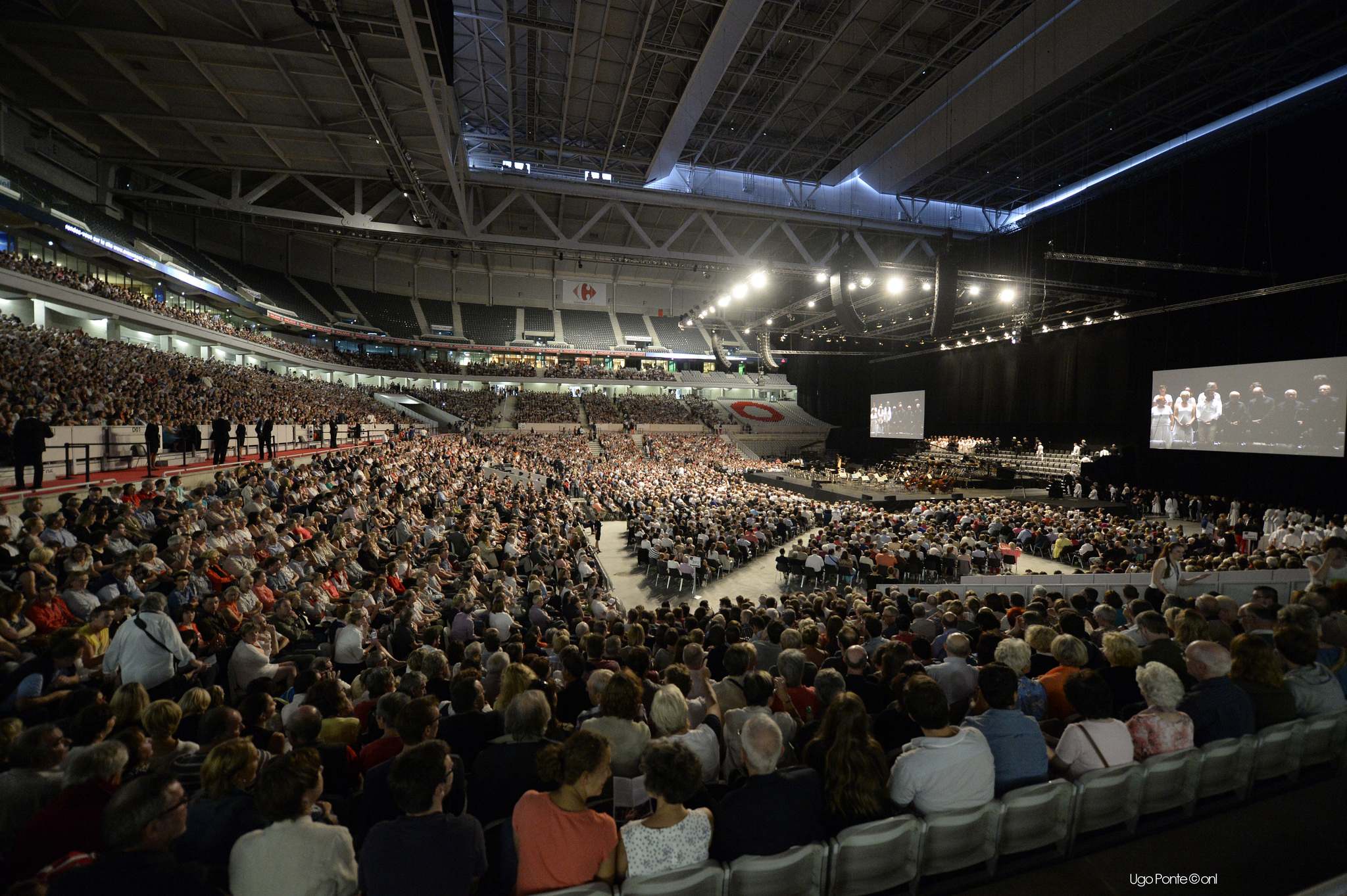
July saw the largest ever full implementation of the RAVENNA network protocol, as the Orchestre Nationale de Lille (ONL) played its 40th anniversary concert to over 16,000 people. It was also the first time the orchestra had performed in the impressive Pierre-Mauroy stadium just outside Lille, usually reserved for premiership football matches. However, the stadium is capable of an unusual alternative configuration: the northern half of the pitch lifts up and slides over the southern half to reveal a ‘showcase’ arena for concerts and indoor sporting competitions, complete with terraced seating below pitch level,
“It was an impressive set-up,” recalled digital audio specialist Fred Blanc-Garin, who was there on behalf of the ONL. “We essentially brought in the ONL’s recently installed digital studio set-up that now features a RAVENNA network, but we had to supplement it with additional material.”
In total there were two Lawo mc256 consoles: the first at front-of-house operated by experienced engineer and ONL veteran, Francois Gabert, who was also managing monitors from FoH, and the second console from Paris-based live audio recording specialist Yasta in a separate room for audio capture for recording and broadcast. The recording console was set up and operated by Delphine Hannotin from INA.
For the 100-piece orchestra and 200-strong choir, the ONL team deployed a total of 78 digital microphones on stage, which meant that ten Neumann DMI-8 interfaces equipped with RAVENNA cards were required. Once collected by the DMIs, the microphone signals were packed into RAVENNA multicast streams and sent to a network switch where the streams were automatically duplicated. One set of streams was received by the FOH console and the second went to the broadcast console, and then on again to the Pyramix digital audio workstation.
“It was the first time any of us had set up an event of this scale using RAVENNA technology, which needed to demonstrate flawless interoperability between equipment from several different manufacturers,” explained Blanc-Garin. “As such, it was a lot of work (we expected that) but we were lucky to have first-class support from all concerned, especially Lawo and Neumann. The results were worth every second of the time invested – on the night everything worked perfectly and we all had huge smiles on our faces, from the technicians to the musicians and of course the audience. No other networking technology can offer this level of performance and scalability, and I’m convinced we’ve set the standard for the future.”
